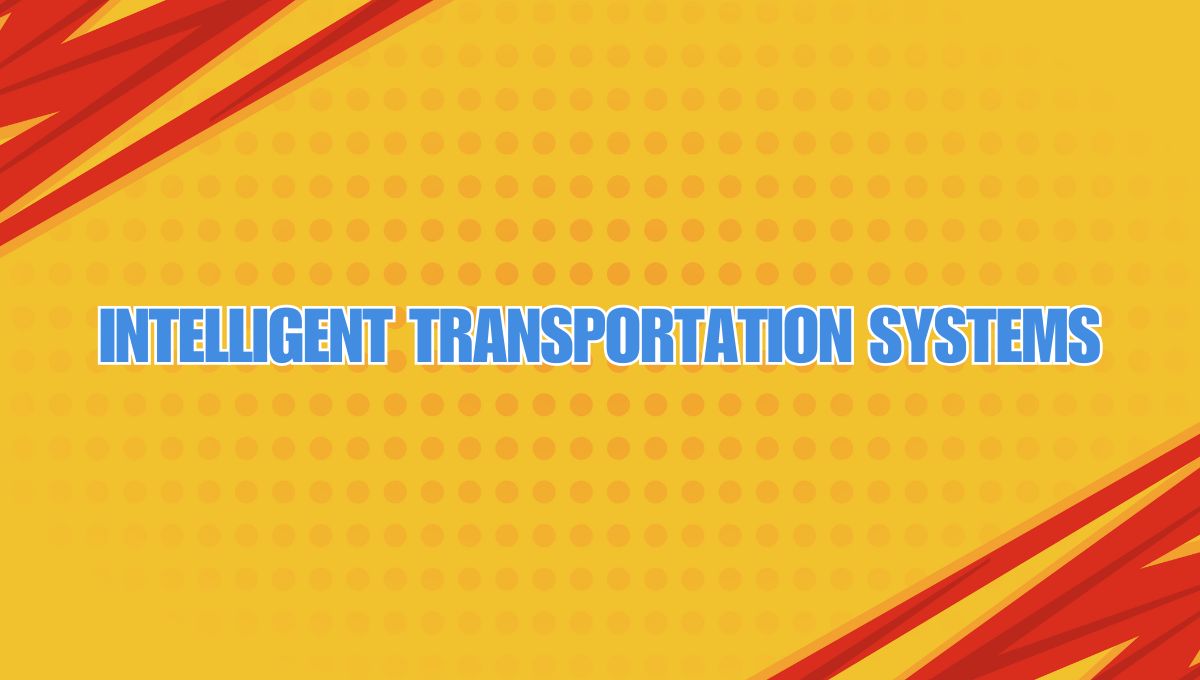Business Solutions
Parking AI: Transforming Intelligent Transportation Systems
Published
4 months agoon
By
Dev Dev
Finding a parking spot in a bustling city can be a frustrating experience. With the advent of parking AI and its integration into the broader framework of intelligent transportation systems, urban mobility is undergoing a major transformation. These technologies are not only improving efficiency but also addressing critical issues such as traffic congestion, pollution, and safety.
Traditional parking systems often struggle to keep up with increasing urbanization. Drivers spend significant time searching for available spots, which contributes to traffic congestion and environmental pollution. Additionally, poorly managed parking spaces can lead to inefficiencies in revenue collection for municipalities and businesses.
The surge in urban populations has only magnified these challenges, making it essential to find smarter solutions. Parking AI, as part of intelligent transportation systems, bridges the gap by offering real-time solutions tailored to modern cities’ needs. Revolutionize urban mobility by leveraging parking AI to enhance city infrastructure.
How Parking AI Works
Parking AI combines advanced technologies such as sensors, cameras, machine learning, and cloud computing. These systems collect real-time data from parking lots and street spaces, analyze it, and provide actionable insights to both drivers and administrators.
For example, cameras equipped with AI algorithms can identify occupied and vacant parking spots, while connected sensors track vehicle movement. This data is then relayed to apps or digital signboards, enabling drivers to locate available spaces effortlessly. The integration of these technologies within intelligent transportation systems ensures seamless communication between various components.
Real-Time Parking Availability
One of the most practical applications of parking AI is its ability to provide real-time updates on parking availability. This feature helps drivers save time and reduces the stress of finding a spot in crowded areas.
Cities that implement smart parking systems see significant reductions in congestion, as fewer cars circle the block in search of parking. Moreover, these systems can dynamically allocate spaces based on demand, ensuring optimal use of available resources. Discover how parking AI can streamline traffic flow and reduce frustration for drivers.

Smart Payment and Ticketing
AI has revolutionized payment systems by introducing smart, contactless, and app-based solutions. Instead of fumbling for cash or dealing with outdated machines, drivers can use mobile apps to pay for parking effortlessly.
These systems also allow for automated billing based on duration, ensuring transparency and accuracy. Furthermore, ticketing systems powered by parking AI eliminate the need for physical tickets, reducing waste and enhancing user experience.
Enhancing Traffic Flow with Parking AI
Traffic congestion is a persistent problem in urban areas, and inefficient parking contributes significantly to this issue. By guiding drivers directly to available spots, parking AI reduces unnecessary driving and improves overall traffic flow.
Additionally, intelligent transportation systems equipped with parking AI can analyze traffic patterns and make predictive recommendations. This ensures smoother mobility across cities and helps in proactive planning for peak hours.
Environmental Benefits of Parking AI
The environmental advantages of parking AI are substantial. By minimizing the time spent searching for parking, vehicles consume less fuel and emit fewer greenhouse gases. This contributes to cleaner air and a healthier urban environment.
Furthermore, parking AI enables the integration of electric vehicle (EV) charging stations within smart parking lots. This not only encourages the adoption of EVs but also supports cities’ sustainability goals. Embrace parking AI to create greener, more livable cities.
Security and Surveillance with Parking AI
Safety is a top priority in parking management, and parking AI addresses this concern effectively. Artificial intelligence powered surveillance systems monitor parking areas for theft, vandalism, and other security threats.
These systems can quickly detect anomalies, such as unauthorized access or suspicious activities, and alert authorities in real time. Additionally, advanced facial recognition and license plate identification technologies ensure that only authorized vehicles enter restricted areas.
Integration with Autonomous Vehicles
As autonomous vehicles (AVs) become a reality, parking AI plays a crucial role in enabling seamless integration. Self-driving cars rely on AI-powered infrastructure to locate and navigate parking spaces without human intervention.
Smart parking systems equipped with AI provide the data AVs need to park efficiently. This includes mapping available spots, calculating optimal routes, and ensuring collision-free parking. Such advancements pave the way for fully autonomous transportation ecosystems.
Economic Benefits of Smart Parking
Parking AI is not just about convenience; it also has significant economic implications. For cities, smart parking systems generate additional revenue by optimizing space utilization and enforcing compliance.
Businesses and operators benefit from cost savings through reduced staffing needs and automated systems. Moreover, efficient parking management attracts more customers to retail and entertainment hubs, boosting local economies.
Future of Parking AI in Intelligent Transportation Systems
The future of parking AI in intelligent transportation systems looks promising. Innovations such as AI-powered dynamic pricing, blockchain for secure payments, and augmented reality for navigation are on the horizon.
As these technologies evolve, they will further enhance urban mobility and transform how cities function. Parking AI, when combined with intelligent transportation systems, holds the potential to create smarter, more connected communities.
Parking AI is reshaping urban mobility, providing efficient, sustainable, and secure parking solutions. Its integration into intelligent transportation systems is revolutionizing how cities manage traffic, reduce environmental impact, and enhance the overall quality of life. As these technologies continue to advance, they will undoubtedly become a cornerstone of modern urban infrastructure.
Frequently Asked Questions about Parking AI and ITS
- Why is parking AI necessary in intelligent transportation systems?
Parking AI addresses challenges like congestion, inefficiency, and environmental impact in urban areas, making parking more efficient and accessible. - How does parking AI provide real-time updates on parking availability?
It uses sensors, cameras, and machine learning to collect and analyze data, which is then shared with drivers via apps or digital displays. - What technologies are used in parking AI systems?
Parking AI relies on technologies such as sensors, cameras, machine learning algorithms, and cloud computing for real-time insights and automation. - How does parking AI improve traffic flow in cities?
By guiding drivers to available spots quickly, it reduces unnecessary driving and congestion, ensuring smoother traffic patterns. - What are the environmental benefits of using parking AI?
It reduces fuel consumption and emissions by minimizing the time spent searching for parking, contributing to cleaner air and greener cities. - How does parking AI enhance security in parking lots?
AI-powered surveillance systems monitor activity, detect anomalies, and provide real-time alerts to prevent theft and vandalism. - Can parking AI integrate with autonomous vehicles?
Yes, parking AI provides critical data, such as spot availability and optimal parking routes, to enable seamless autonomous vehicle parking. - What role does parking AI play in smart payment systems?
It automates payment processes with contactless and app-based solutions, making transactions faster and more user-friendly. - How does parking AI contribute to economic growth?
It optimizes space utilization, generates additional revenue for cities, reduces operational costs, and attracts more visitors to commercial areas.
Years of covering technology and startup news.

You may like
Business Solutions
Geneo Glam: Skin Firming Treatment for Radiant, Youthful Skin
Geneo Glam is the ultimate skin firming treatment designed to restore elasticity, enhance radiance, and leave you with a glowing, youthful complexion.
Published
12 hours agoon
May 9, 2025By
Marks Strand
The Geneo Glam skin firming treatment is a luxurious, non-invasive facial that revitalizes the skin by improving firmness, elasticity, and hydration. Using advanced OxyPod technology, this treatment delivers a unique combination of exfoliation, oxygenation, and infusion of active ingredients to help the skin look smoother, tighter, and more radiant.
Key Benefits
- Firms and Hydrates
The treatment boosts collagen and elastin production, helping skin feel firmer and more supple. - Improves Elasticity
Increases the skin’s resilience and reduces the appearance of fine lines and wrinkles. - Prevents Collagen Breakdown
Helps preserve the skin’s youthful structure by protecting existing collagen and supporting healthy cell function.
Powerful Natural Ingredients
- 24K Gold Particles
Stimulate collagen production, protect skin fibers, and encourage cell renewal for a firmer, lifted appearance. - Silk Amino Acids
Strengthen the skin barrier, lock in moisture, and support collagen synthesis to reduce visible signs of aging. - Carnosine Peptides
Help protect the skin from sugar-related damage (glycation), delay cellular aging, and extend the life of skin cells. - Copper
An antioxidant and anti-inflammatory that supports collagen development, smooths fine lines, and helps with skin regeneration.
How the Treatment Works
- Exfoliation and Oxygenation
The Geneo Glam OxyPod is activated with a Primer Gel, gently exfoliating the skin and triggering a natural oxygenation process that increases blood flow and enhances skin vitality. - Infusion of Actives
Active ingredients such as gold particles, peptides, and amino acids are infused deep into the skin to firm and rejuvenate. - Hydration and Nourishment
A final serum containing hyaluronic acid, rosehip oil, and marula oil hydrates and soothes the skin, leaving it soft and glowing.
Who Should Try Geneo Glam?
This treatment is ideal for people who want to:
- Reduce fine lines and early signs of aging
- Firm and tighten sagging skin
- Restore hydration and improve skin tone
Geneo Glam offers a refreshing way to firm, lift, and hydrate your skin—leaving you with a youthful glow and smooth, resilient skin. It’s a perfect solution for anyone seeking visible results without invasive procedures or downtime.
Business Solutions
H.265 miniature UAV encoders: A comprehensive Overview
H.265 miniature UAV encoders revolutionize aerial technology with advanced video compression, ensuring high efficiency and superior performance for modern UAV systems.
Published
2 days agoon
May 8, 2025By
Adva
As the demand for high-quality, real-time video transmission from unmanned aerial vehicles (UAVs) continues to rise in both military and commercial applications, the need for efficient, compact video encoding solutions has become paramount. H.265 miniature UAV encoders represent a significant advancement in this space, providing robust video compression in a small, lightweight package ideal for drones with stringent size, weight, and power (SWaP) constraints. Leveraging the power of High Efficiency Video Coding (HEVC), also known as H.265, these encoders allow UAVs to deliver high-resolution video over constrained data links, enhancing situational awareness and operational effectiveness without overwhelming available bandwidth.
H.265 is a video compression standard that succeeds H.264/AVC and offers approximately double the data compression ratio at the same video quality level. This efficiency is particularly beneficial for UAV applications, where bandwidth and power availability are limited, especially during beyond-line-of-sight (BLOS) missions or in contested environments. With H.265 encoders, UAVs can stream 1080p or even 4K encoder video in real time while consuming significantly less data than older standards. This is critical for operations such as intelligence, surveillance, and reconnaissance (ISR), where maintaining video clarity over long distances or through relay networks is essential for accurate decision-making.
Miniature H.265 UAV encoders are engineered to operate under harsh environmental conditions while maintaining optimal performance. These devices are typically ruggedized, featuring extended temperature ranges, shock resistance, and electromagnetic shielding to ensure reliable operation in military or field environments. Despite their small size—often no larger than a deck of cards—they include advanced features such as low-latency encoding, dynamic bitrate control, encryption, and support for multiple streaming protocols including RTSP, RTP, and MPEG-TS. This allows them to integrate seamlessly into existing command-and-control infrastructure and support a variety of end-user applications, from real-time ground monitoring to autonomous navigation and object tracking.

The integration of H.265 encoders into small UAVs has significantly expanded the capability of tactical drone systems. For example, military units can deploy hand-launched drones equipped with these encoders to provide persistent ISR coverage over a battlefield, transmitting clear, actionable video intelligence back to command centers in near real time. Law enforcement agencies and border security forces also benefit from these technologies, using UAVs to monitor large or remote areas with minimal personnel. In disaster response scenarios, such encoders enable drones to deliver live aerial assessments of affected regions, helping responders prioritize actions and coordinate relief efforts efficiently.
Beyond video transmission, modern H.265 UAV encoders are increasingly integrated with onboard artificial intelligence modules that enable edge processing. This allows UAVs to perform real-time object recognition, motion detection, and scene analysis directly within the encoder, reducing the need to send raw data to centralized systems for processing. Such capabilities are crucial in time-sensitive missions where latency can affect outcomes, such as tracking moving targets or identifying threats in complex terrain.
Despite their many advantages, the deployment of H.265 miniature encoders does come with some technical considerations. The encoding process, while more efficient than previous standards, requires higher computational resources. Manufacturers must therefore strike a careful balance between processing power, thermal management, and energy consumption. Additionally, the compatibility of H.265 streams with legacy systems remains a factor, as not all ground stations or video players natively support HEVC decoding without updates or specialized software.
Manufacturers of H.265 miniature UAV encoders include companies such as IMT Vislink, Soliton Systems, Haivision, and VITEC, all of which provide solutions tailored to UAV and robotics applications. These encoders are often modular, allowing integrators to select configurations based on mission requirements, payload limitations, and transmission needs. As the ecosystem of compact, high-efficiency video systems grows, continued innovation in low-power silicon and AI integration is expected to drive the next wave of capability enhancements in this field.
In the evolving landscape of drone technology, H.265 miniature UAV encoders stand out as a critical enabler of high-performance video transmission. By combining advanced compression with minimal SWaP impact, these systems provide UAV operators with the tools to observe, analyze, and act with unprecedented precision and clarity—no matter how small the platform or how demanding the environment.
Business Solutions
IEEE 802.11p and V2X Communication: Enabling Smarter, Safer Roads
IEEE 802.11p revolutionizes V2X communication, driving smarter, safer roads through advanced vehicle connectivity. This cutting-edge technology enhances transportation systems, enabling intelligent and secure interactions for a safer future.
Published
2 days agoon
May 7, 2025By
Adva
Modern vehicles are no longer isolated machines; they are becoming intelligent, connected nodes within a larger transportation ecosystem. At the heart of this transformation is Vehicle-to-Everything (V2X) communication, which enables cars to talk to each other and to the infrastructure around them. One of the first and most influential technologies developed to support V2X is the IEEE 802.11p standard—a wireless standard specifically tailored for vehicular environments.
What is IEEE 802.11p?
IEEE 802.11p is an amendment to the IEEE 802.11 standard (commonly known as Wi-Fi), designed to enable wireless access in vehicular environments. It was approved in 2010 and forms the basis for Dedicated Short-Range Communications (DSRC).
Key Characteristics of 802.11p:
- Frequency Band: Operates in the 5.9 GHz band reserved for Intelligent Transportation Systems (ITS).
- Low Latency: Optimized for fast, real-time communication necessary for safety-critical applications.
- Range: Effective communication range of up to 1 kilometer, suitable for high-speed vehicle interaction.
- Decentralized Architecture: Enables direct communication (V2V and V2I) without the need for cellular or network infrastructure.
- Robustness: Handles high-speed mobility and rapidly changing topologies typical of vehicular environments.

Role of 802.11p in V2X Communication
V2X (Vehicle-to-Everything) is a broader term encompassing various communication paradigms, including:
- V2V (Vehicle-to-Vehicle)
- V2I (Vehicle-to-Infrastructure)
- V2P (Vehicle-to-Pedestrian)
- V2N (Vehicle-to-Network)
- V2C (Vehicle-to-Cloud)
802.11p primarily supports V2V and V2I communications, forming the backbone of DSRC-based V2X implementations. Its low latency and direct communication capabilities make it ideal for applications such as:
- Forward collision warnings
- Intersection movement assist
- Emergency electronic brake lights
- Lane change warnings
Comparison with Cellular V2X (C-V2X)
As V2X technology has evolved, C-V2X (based on LTE and 5G standards) has emerged as a strong alternative to 802.11p. Here’s how they compare:
| Feature | IEEE 802.11p (DSRC) | C-V2X (LTE/5G) |
| Latency | ~10 ms | ~5–10 ms (LTE), <5 ms (5G) |
| Coverage | Short-range, direct | Short + long-range via network |
| Deployment | Mature, field-tested | Growing, especially with 5G |
| Infrastructure | Minimal (no cellular needed) | Requires cellular networks (for V2N/V2C) |
| Interoperability | Limited with C-V2X | Newer versions support dual-mode |
Adoption and Use Cases
Global Deployment:
- United States: Initially favored DSRC based on 802.11p, though recent FCC rulings have shifted focus toward C-V2X.
- Europe: ETSI has defined ITS-G5, a protocol stack based on 802.11p.
- Japan and South Korea: Active use of DSRC for tolling and traffic safety.
Real-World Applications:
- Collision avoidance systems
- Smart intersections
- Road hazard notifications
- Platooning for commercial vehicles
- Public transport priority systems
Advantages of 802.11p
- Mature and Proven: Used in numerous pilot programs and early deployments.
- Fast Time to Communication: No need for handshake protocols; devices can communicate almost instantly.
- No Subscription Costs: Operates independently of cellular networks.
Limitations and Challenges
- Scalability: In high-density traffic, packet collisions may reduce reliability.
- Spectrum Allocation: Regulatory changes in some countries have limited the bandwidth available to DSRC.
- Limited Ecosystem Growth: Many automakers and countries are shifting investment to C-V2X and 5G-based platforms.
Future Outlook
While 802.11p has laid the foundation for V2X communication, the industry is gradually pivoting toward more advanced and scalable technologies such as 5G NR-V2X. However, 802.11p remains relevant in regions where DSRC infrastructure is already deployed and continues to serve as a dependable option for immediate, low-latency vehicular communication.
Hybrid Solutions:
Some industry players are exploring dual-mode V2X devices that support both 802.11p and C-V2X, ensuring backward compatibility and smoother transitions.
IEEE 802.11p has played a pivotal role in launching the era of connected vehicles, offering reliable, low-latency communication tailored for high-speed mobility. While newer technologies like C-V2X and 5G are beginning to dominate the roadmap, 802.11p’s contributions remain foundational in the evolution of V2X systems. As the automotive industry moves forward, a mix of technologies, including legacy support for 802.11p, will ensure that safety, efficiency, and connectivity continue to advance on roads around the world.

Geneo Glam: Skin Firming Treatment for Radiant, Youthful Skin

H.265 miniature UAV encoders: A comprehensive Overview

IEEE 802.11p and V2X Communication: Enabling Smarter, Safer Roads
Trending
-
Marketing & Analytics2 years ago
A Complete Guide To HubSpot’s New B2B Marketing, Sales Hub, and Prospecting Tool
-
3D Technology2 years ago
3D Scanner Technology for Android Phones: Unleashing New Possibilities
-
Marketing & Analytics2 years ago
How SMS Services And Software For Bulk SMS Sending Can Help Your Business Grow
-
3D Technology2 years ago
Mobile 3D Scanners: Revolutionizing 3D Scanning Technology
-
3D Technology2 years ago
3D scanning technologies and scanning process
-
Business Solutions1 year ago
Understanding A2P Messaging and the Bulk SMS Business Landscape
-

 Business Solutions1 year ago
Business Solutions1 year agoThe Power of Smarts SMS and Single Platform Chat Messaging
-

 Automotive2 years ago
Automotive2 years agoDSRC vs. CV2X: A Comprehensive Comparison of V2X Communication Technologies



